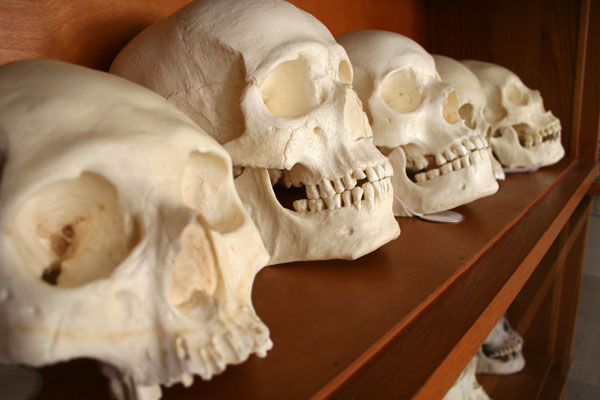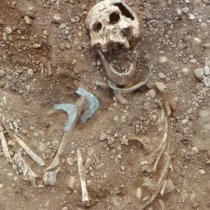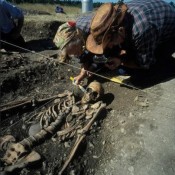A new study finds that Stone Age farmers lived through routine violence, and women weren’t spared from it! Contrary to findings from mass gravesites of the period, women were equally likely to be victims of deadly blows, according to the study published in the February issue of the American Journal of Physical Anthropology.
Linda Fibiger, an archaeologist at the University of Edinburgh in Scotland, and her colleagues focused on the late Stone Age, characterised by the transition of hunter-gatherer to farmer. Up to now researchers thought women were spared from conflicts due to their potential childbearing value, Fibiger told LiveScience, as mass graves unearthed from that time in Talheim and Eulau (Germany) contained mostly males who had died in violent conflicts.
In order to find out what life looked liked for Stone Age farmers outside the “war zone” of bloody conflicts, the team assessed 478 skulls from collections throughout Sweden and Denmark from between 3900 BC and 1700 BC.
The analysis discovered that up to 1 in 6 skulls exhumed in Scandinavia from the late Stone Age — between about 6,000 and 3,700 years ago — had nasty head injuries evidence such as an “axe-shaped hole in the skull,” as Fibinger said.
In particular, nearly 10 percent of the Swedish skulls exhibited signs of violent injury, and nearly 17 percent of the Danish skulls had such wounds. Men had more nonfatal injuries, but women were just as likely as men to have lethal head wounds — which can be identified because they never healed.
That suggests these ancient farmers routinely experienced violence, likely due to raids, family feuds, or other daily skirmishes with competing groups, Fibiger said.
However, it is not clear why women were frequent victims of violence. Domestic violence could be a factor, but proving it requires looking for repeat injuries and wounds to the ribs and torso, Fibiger said. As skulls and skeletons are jumbled up at these sites, and many skeletons weren’t preserved, that’s not possible.
It is more likely that women suffered fatal injuries, because they couldn’t fight ferociously in raids, researchers believe. While men may have trained from a young age to fight, women were probably tasked with child rearing.
Christian Meyer, an anthropology doctoral candidate at the University of Mainz in Germany, who was not involved in the study, commented that “It’s one of the first [studies] that really looks at a really large sample size, and it draws from a larger region.”




